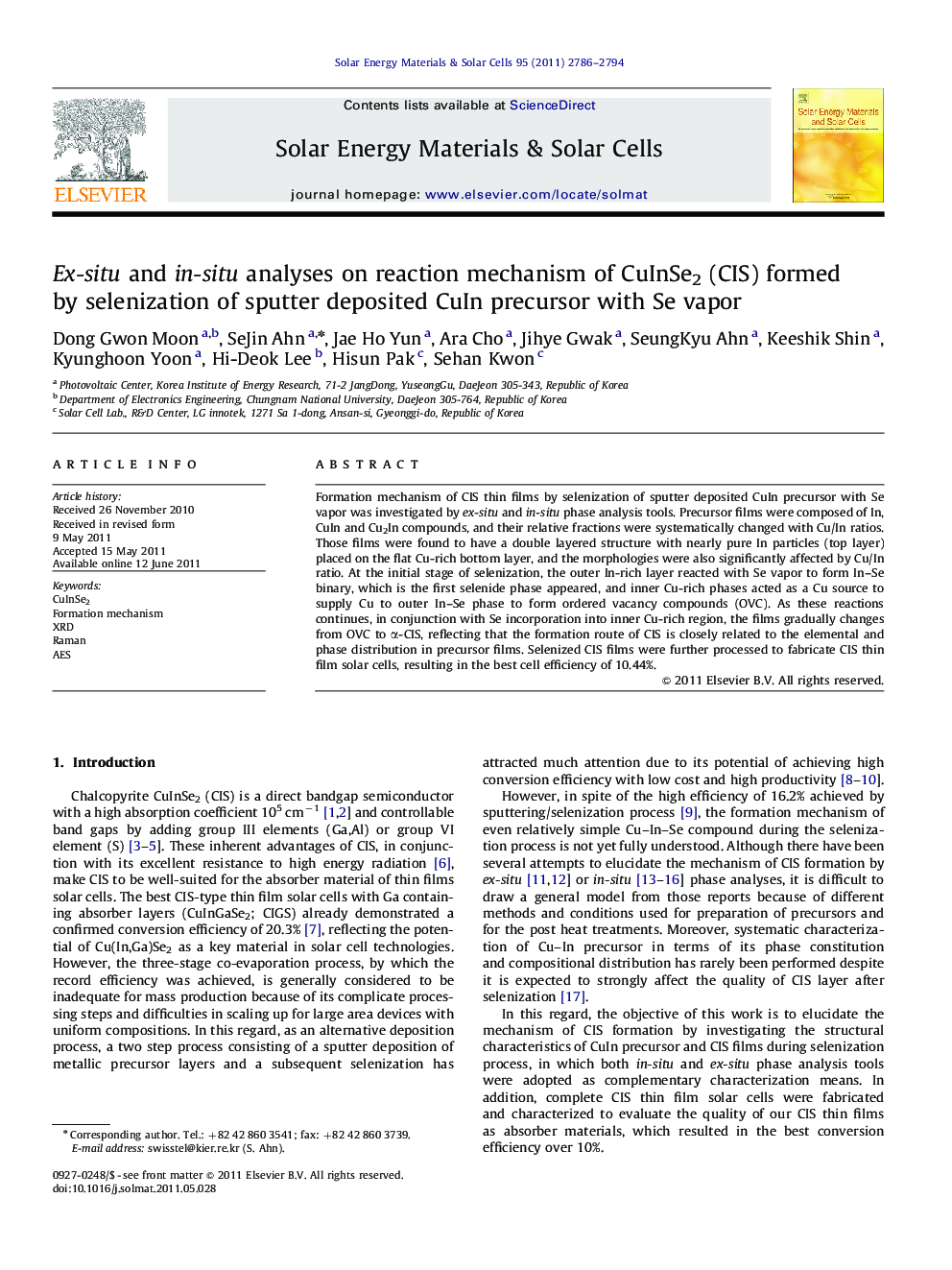| Article ID | Journal | Published Year | Pages | File Type |
|---|---|---|---|---|
| 78610 | Solar Energy Materials and Solar Cells | 2011 | 9 Pages |
Formation mechanism of CIS thin films by selenization of sputter deposited CuIn precursor with Se vapor was investigated by ex-situ and in-situ phase analysis tools. Precursor films were composed of In, CuIn and Cu2In compounds, and their relative fractions were systematically changed with Cu/In ratios. Those films were found to have a double layered structure with nearly pure In particles (top layer) placed on the flat Cu-rich bottom layer, and the morphologies were also significantly affected by Cu/In ratio. At the initial stage of selenization, the outer In-rich layer reacted with Se vapor to form In–Se binary, which is the first selenide phase appeared, and inner Cu-rich phases acted as a Cu source to supply Cu to outer In–Se phase to form ordered vacancy compounds (OVC). As these reactions continues, in conjunction with Se incorporation into inner Cu-rich region, the films gradually changes from OVC to α-CIS, reflecting that the formation route of CIS is closely related to the elemental and phase distribution in precursor films. Selenized CIS films were further processed to fabricate CIS thin film solar cells, resulting in the best cell efficiency of 10.44%.
Graphical abstract.Figure optionsDownload full-size imageDownload as PowerPoint slideHighlights► CuInSe2 formation route was elucidated by in-situ and ex-situ phase analyses. ► Structure of Cu–In precursor film was correlated with formation route of CuInSe2. ► Efficiency over 10% was demonstrated for CuInSe2 solar cell.
